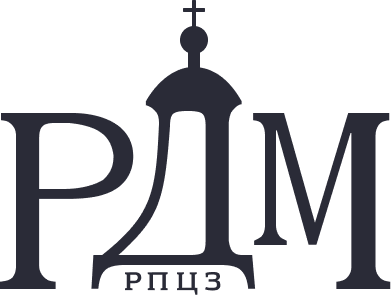
In the historical center of Jerusalem, opposite the Church of the Holy Sepulcher, there is the Alexander Compound with the Church of St. Alexander Nevsky, which comes under the jurisdiction of the Russian Ecclesiastical Mission in Jerusalem as part of the Russian Orthodox Church Outside of Russia and is rightfully one of the most important churches in the Russian Diaspora. At the Alexander Compound, which has been under the omophorion of the ROCOR for more than 100 years, there is another great shrine associated with the Way of the Cross of our Savior – the Threshold of the Judgement Gates, at which, according to a tradition established even before the Russian Revolution, an unbroken reading of the psalter is kept.
The St. Alexander Nevsky Church in Jerusalem was consecrated on May 22, 1896 by Patriarch Gerasim I of Jerusalem, co-served by the head of the Russian Ecclesiastical Mission, Archimandrite Raphael (Trukhin). Back in 1859, the first Russian consul in Jerusalem V.I. Dorgobuzhenov planned to build a Russian church at this holy place, but only after Archimandrite Antonin (Kapustin) found the great relic from the times of Christ, the Threshold of the Judgement Gates in 1884, the chairman of the Imperial Orthodox Palestine Society, Grand Duke Sergei Alexandrovich, decided to build a temple at this holy place. In 1894, the brother of the Grand Duke Sergei Alexandrovich, Emperor Alexander III, died. The IOPS leadership decided to perpetuate the memory of the emperor by building a church in the name of His heavenly patron – Saint Alexander Nevsky, at the threshold of the Judgment Gate in Jerusalem. From that time to the present day, this temple has had the status of a memorial, and therefore, for 125 years, the Russian Ecclesiastical Mission in Jerusalem has celebrated the Memorial Liturgy every Thursday, at which not only Emperor Alexander III is commemorated, but also the deceased honorary members of the IOPS.

Despite the hard trials that fell to the lot of the Russian people in the 20th century; wars, revolution, terror and exile, prayer for the suffering Holy Russian land and the Russian people in the fatherland did not cease at the St. Alexander Nevsky Church at the threshold of the Judgement Gates. Those living in the diaspora, who experienced there own “way of the Cross” are also commemorated.
After the collapse of the Russian Empire and throughout the entire 20th century, the faithful children of the Russian Church Abroad prayed and served in the Alexander Nevsky Church in Jerusalem.

By agreement with the Palestinian Orthodox Society and the resolution of the Holy Synod, the temple is under the jurisdiction of the Head of the REM in Jerusalem. Despite the wars, the repeated change of state power and other vicissitudes that Jerusalem experienced in the 20th century, the clergy of the REM (ROCOR) and the staff of the OPS in Jerusalem zealously carried out their ministry in the temple at the Threshold of the Judgement Gates. This holy place has been visited by pilgrims from different countries throughout the world who came to worship at the Holy Sepulcher. In the era of the most severe persecutions against Christians in the Soviet Union, the functioning Russian temple, built in memory of Emperor Alexander III in the center of Jerusalem, was, as it were, a symbol of Holy Orthodox Russia, which the God-fighters and desecrators of Russian Orthodoxy could not destroy in the 20th century.








After the restoration of canonical communion between the Church Abroad and the Moscow Patriarchate in 2007, the name of the Patriarch of Moscow is commemorated at each Liturgy that is celebrated in the Church of St. Alexander Nevsky. The Head and the clergy of the REM ROCOR continue to regularly conduct divine services in this church at the Threshold of the Judgment Gate, which is sacred for Russia and the Russian people.



Unfortunately, the presence of the Russian Church Abroad and the Orthodox Palestine Society at the Alexander Compound has recently been put under question by various Russian public organizations. At the request of the Russian Federation, several years ago, the process of the transfer of the Compound and the Alexander Nevsky Church to the jurisdiction of the Russian Federation began in Israel without taking into account the rights of the ROCOR and the Orthodox Palestine Society, which have been in the Compound for the past 100 years. It is a blatant lie to consider this Russian shrine in Jerusalem was without an owner throughout the 20th century, while all this time there were representatives of the REM ROCOR and OPS.
Despite attempts to distort historical reality and deprive the Church Abroad of the right to be in the Alexander Compound, the church authority of the Church Abroad and the REM in Jerusalem will continue to defend their rights in order to preserve this holy place for Russian pilgrims and the Russian Orthodox Church.
We trust in the Lord, through the prayers of the holy noble prince St. Alexander Nevsky, that this difficult situation will be peacefully resolved, remembering the words of the holy commander: “God is not to be found in power, but in truth!”




